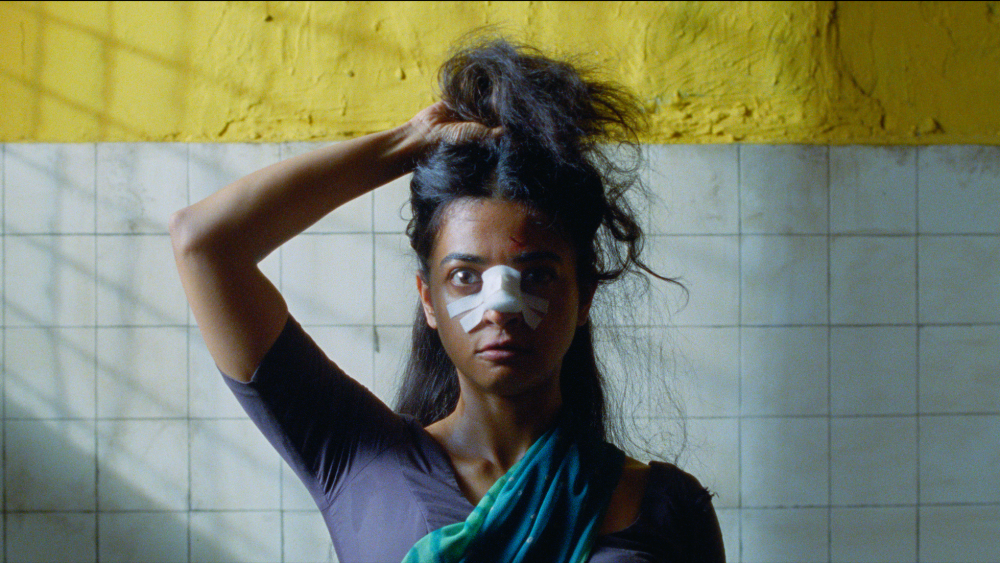
Sister Midnight 2024 Hindi Movie
“Sister Midnight” is a genre-bending Hindi film released in 2024, written and directed by Karan Kandhari. Marking his feature debut, the film takes a daring and unconventional route by combining psychological horror, surrealism, and dark comedy, all set against the chaotic and vibrant backdrop of Mumbai.
Plot Overview
At the center of Sister Midnight is Uma, played by Radhika Apte, a newly married woman who relocates from a small town to a congested Mumbai slum. Expecting companionship and a fresh start, she finds herself trapped in a lifeless marriage with a disinterested husband and surrounded by suffocating societal norms.
As her domestic existence turns increasingly bleak, Uma begins to unravel psychologically. The film ventures into surreal and symbolic territory, portraying her inner turmoil and growing rage through fantastical sequences — including dreamlike hallucinations, violent outbursts, and bizarre transformations. What starts as a drama rooted in realism gradually evolves into an allegorical journey of female rage, identity, and emancipation.
Themes and Symbolism
Sister Midnight delves deep into the emotional and psychological state of women who are socially and emotionally isolated. Themes of domestic confinement, marital oppression, and repressed desire are explored with a raw and unfiltered lens. The film uses metaphors and surreal visuals — such as nocturnal chases, animal imagery, and stop-motion sequences — to depict Uma’s descent and eventual rebirth.
The narrative questions traditional gender roles and societal expectations of women, especially in the context of arranged marriage and urban poverty. Uma’s transformation from a passive housewife into a defiant figure becomes the core of the film’s feminist critique.
Performances
Radhika Apte delivers a bold and haunting performance, capturing Uma’s vulnerability, frustration, and eventual fury with remarkable intensity. Her portrayal is central to the film’s emotional weight and surreal atmosphere. Supporting roles by Ashok Pathak, Chhaya Kadam, and Smita Tambe offer additional depth, particularly as contrasts to Uma’s escalating rebellion.
Direction and Visual Style
Karan Kandhari employs a distinctive visual style that blends gritty realism with fantastical absurdity. The film’s cinematography uses tight spaces, neon-lit streets, and vivid dreamscapes to reflect Uma’s psychological state. The deliberate use of 35mm film gives the movie a grainy, almost retro aesthetic that enhances its surreal tone.
Influences from psychological thrillers, European arthouse cinema, and silent-era comedy are evident throughout, but the film ultimately forges its own identity. The narrative resists conventional structure, favoring mood, symbolism, and slow-burning tension.
Music and Sound Design
The soundtrack is unconventional for a Hindi-language film, incorporating Western rock, blues, and experimental soundscapes. This musical choice underlines the film’s rebellious spirit and helps build its strange, otherworldly mood. The sound design plays a critical role in heightening tension and disorientation, particularly during Uma’s episodes of hallucination and transformation.
Critical Reception
Sister Midnight has received acclaim for its bold storytelling, thematic depth, and unorthodox execution. Critics have praised it as a rare example of genre-defying Hindi cinema, especially for its fearless approach to feminist themes and psychological horror. While some may find the narrative challenging or overly surreal, many viewers have appreciated its originality and emotional resonance.
Final Thoughts
Sister Midnight is not a film for everyone. Its slow pacing, abstract symbolism, and unapologetically dark tone may unsettle traditional viewers. However, for those seeking bold, thought-provoking cinema that pushes boundaries, it offers a powerful and memorable experience.



